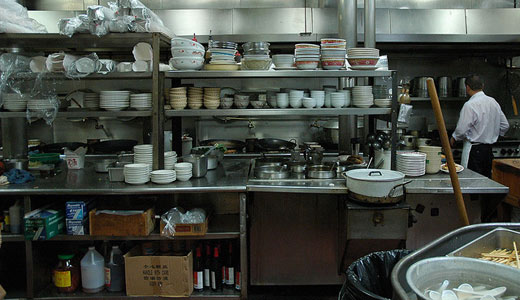
WASHINGTON – When Romualdo Cardoso started working in restaurants 15 years ago he had – and still has – the American Dream: Work hard, work your way up, play by the rules and earn money for yourself and your family.
Cardoso was working on the overnight cleanup crew, one of the lowest jobs on a restaurant totem pole, at a D.C. eatery named, ironically, “America.” He discovered the American Dream wasn’t exactly alive and well for him there.
“I worked there for a year, and then I sprained my ankle. The doctor told me I had to take four weeks off to heal, and I was making $5.75 an hour,” he told the Jan. 16 Kitchen Ethical seminar at the AFL-CIO on conditions in the restaurant industry.
“I had to pay the rent. I couldn’t afford four weeks. I was pretending I was ready to return to work and went back after two. My supervisor said, ‘Your place has been taken. You’re fired.'”
Cardoso’s situation isn’t unique. The labor-backed, unionized, Restaurant Opportunities Center (ROC) and the National Consumers League, who co-hosted the session, released a report describing the appalling conditions in the metro D.C. restaurant industry – conditions duplicated among restaurant workers nationwide.
They added suggestions for what consumers and workers’ allies can do to change that.
Workers in restaurants live on a minimum wage of $2.13 hourly – $2.77 in D.C. – plus tips. But they also depend on managers’ honesty, often absent, in tip splits. Paychecks can be non-existent. And low tips mean no pay, speakers said, describing groups of diners who’d drop $100 or more on meals and leave a five buck tip, or less.
Tips, or lack of them, aren’t restaurant workers’ only problems, the survey says. Even including tips, 11.4 percent of D.C. area restaurant workers said they earned less than the federal minimum wage of $8.25 hourly. Another 21.3 percent earned less than the poverty line. Two-thirds don’t get regular raises, three-fourths have never been promoted, and 80 percent experienced minimum wage, overtime pay or off-the-clock violations.
Almost 90 percent said restaurants don’t provide health insurance and near 80 percent get no sick leave. Six in ten “have worked when they’re sick” because they had to do so.
But consumers can do something about all this, said Britton Loftin of ROC and Sally Greenberg, the National Consumer League’s executive director.
ROC distributed a booklet that consumers can show restaurant managers, saying they will patronize restaurants that only meet set standards for treating their workers correctly – including decent wages, sick leave and health insurance.
And the Consumers League and its labor allies can publicize the campaign. “We need paid sick days” for the workers “and we need to tell management why we’re engaging them on this issue,” Greenberg said. “We need to publicize the good guys and the bad guys” among D.C. and U.S. restaurants.
Photo: The kitchen in a Seattle restaurant. wonderlane // CC 2.0









Comments